The Amazon Rainforest is one of the most biodiverse places on Earth, home to countless species, many of which are found nowhere else. Sadly, many of these incredible creatures are at risk of disappearing forever due to deforestation, climate change, and illegal activities. It’s crucial for us to take action to protect these species, as each one plays a vital role in the ecosystem.
1. The Majestic Jaguar: Silent and Powerful
The jaguar, a symbol of strength and power, roams the dense forests of the Amazon. However, habitat destruction and poaching pose significant threats. According to the World Wildlife Fund, the jaguar’s habitat has been reduced by 46% in the past century. Conservation efforts are vital to ensure that future generations can witness their beauty in the wild. Jaguars are not just magnificent hunters; they also help maintain the balance in the ecosystem by controlling prey populations. Losing them could have a ripple effect throughout the food chain.
Jaguars require large territories to thrive, making them particularly vulnerable to deforestation. Efforts to protect these big cats include creating wildlife corridors and enforcing anti-poaching laws. By preserving jaguar habitats, we also protect countless other species that share their environment. The fate of the jaguar is intricately tied to the health of the Amazon itself.
2. The Playful Amazon River Dolphin: More Than Just a Myth
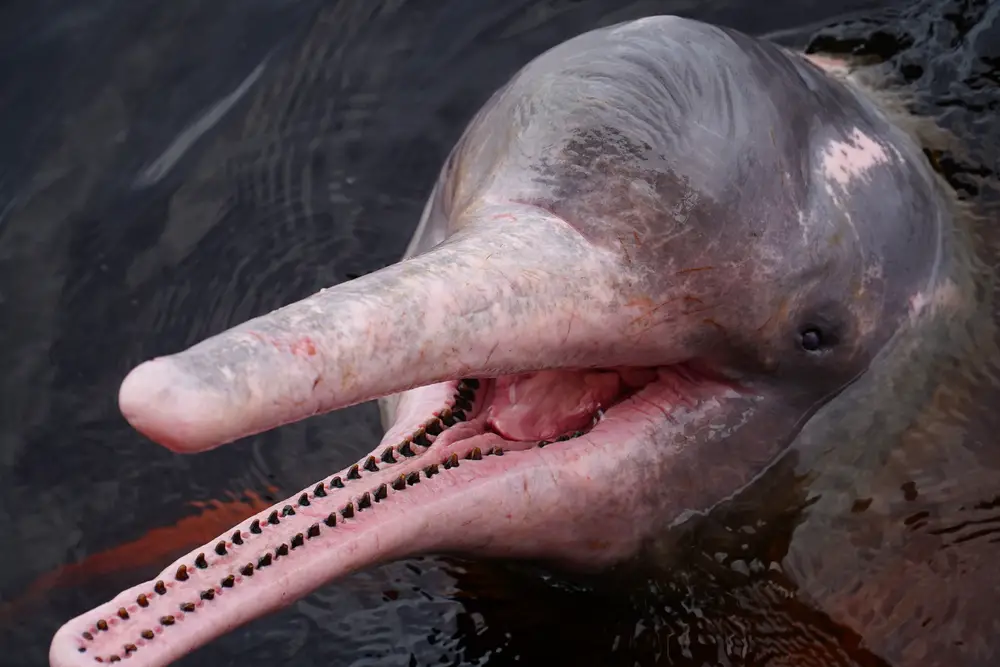
The Amazon River dolphin, known for its playful nature, is facing numerous threats. Pollution, dam construction, and fishing pose dangerous challenges to these intelligent creatures. With their unique pink coloration, they capture the imagination and remind us of the magic within the Amazon’s waters. Efforts to save these dolphins include stricter regulations on fishing practices and pollution controls. The survival of these dolphins is a litmus test for the health of the river ecosystem.
These dolphins are more than just pretty faces; they play a crucial role in their environment. As top predators, they help maintain fish population dynamics, ensuring that no single species dominates. Protecting them means safeguarding the entire river system and the communities that depend on it. The Amazon River dolphin is emblematic of the delicate balance that must be maintained to preserve the Amazon’s natural wonders.
3. The Elusive Giant Otter: Guardian of the Waterways
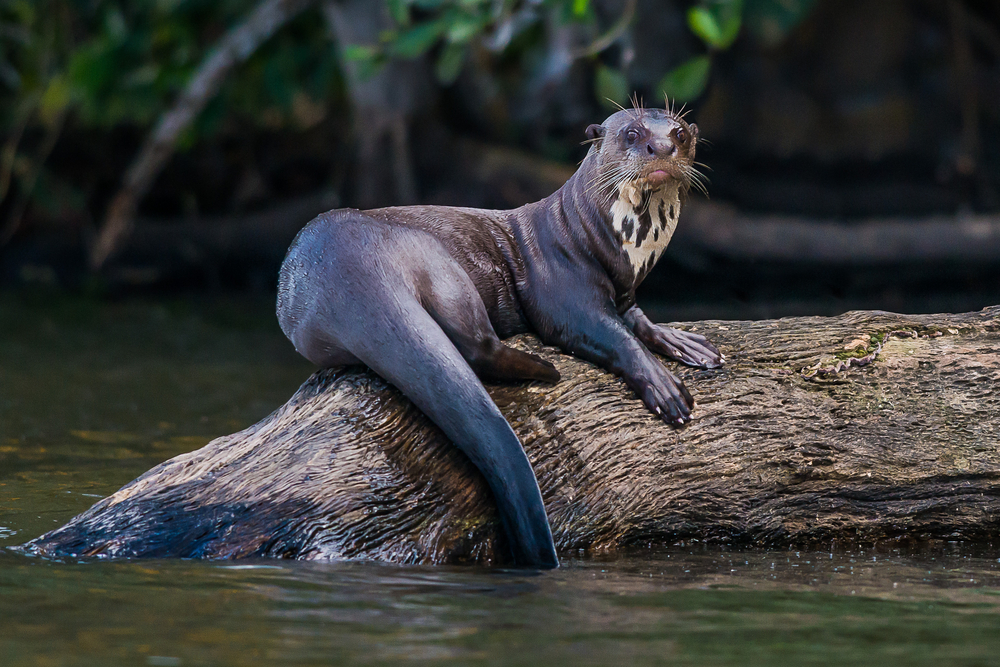
Giant otters, with their playful antics and social nature, are fascinating inhabitants of the Amazon. Yet, they are threatened by habitat loss and pollution. According to the International Union for Conservation of Nature, the giant otter population is decreasing significantly, putting them at risk of extinction. They are essential for keeping fish populations in check, showcasing their importance in the aquatic food web. Protecting their habitats ensures the diversity and health of river environments.
These otters are social creatures, often seen frolicking in groups along the riverbanks. Human encroachment and water contamination are major threats to their survival. Conservation efforts focus on preserving wetlands and ensuring clean waterways. By supporting these initiatives, we help protect a species that plays a fundamental role in its ecosystem.
4. The Spectacular Harpy Eagle: Ruler of the Skies
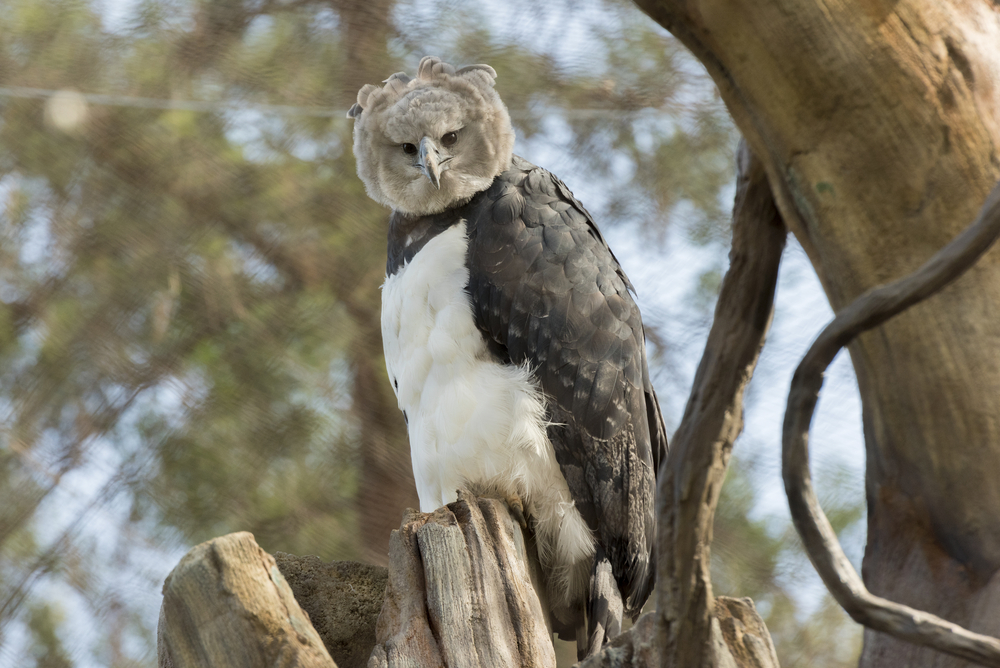
The harpy eagle, with its striking appearance and formidable hunting prowess, is a true king of the Amazonian skies. Unfortunately, deforestation is rapidly shrinking their habitat, threatening their survival. These magnificent raptors rely on large expanses of pristine forest to hunt and raise their young. As apex predators, harpy eagles help control populations of other animals, maintaining ecological balance. Their presence is an indicator of a healthy forest ecosystem.
Despite their strength, harpy eagles are particularly vulnerable to changes in their environment. Conservation efforts aim to protect large forest tracts and educate local communities about the importance of these birds. By preserving the forests, we not only save the harpy eagle but also countless other species that depend on these habitats. Their survival hinges on our ability to maintain the integrity of the rainforest.
5. The Colorful Poison Dart Frog: A Toxic Treasure
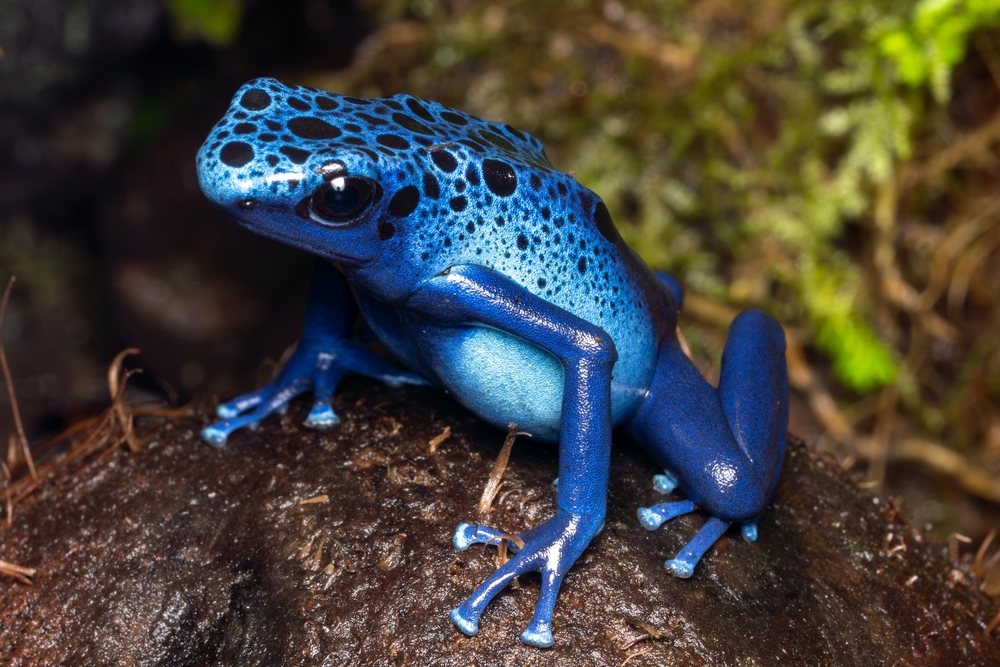
Poison dart frogs are among the most vividly colored creatures in the Amazon, but their beauty belies a deadly defense mechanism. These frogs are famous for the toxins they produce, which have been used by indigenous people for hunting. Habitat destruction, however, poses a severe threat to their existence. These amphibians are sensitive to environmental changes, making them early indicators of ecosystem health. Protecting them involves conserving their forest and stream habitats.
In addition to their ecological role, poison dart frogs have potential medical benefits. Research into their toxins could lead to breakthroughs in painkillers and other medications. Ensuring their survival could unlock new scientific discoveries, highlighting the importance of preserving biodiversity. Their fate is intertwined with the health of the rainforest, making their protection a priority.
6. The Resilient Manatee: Gentle Giants of the River
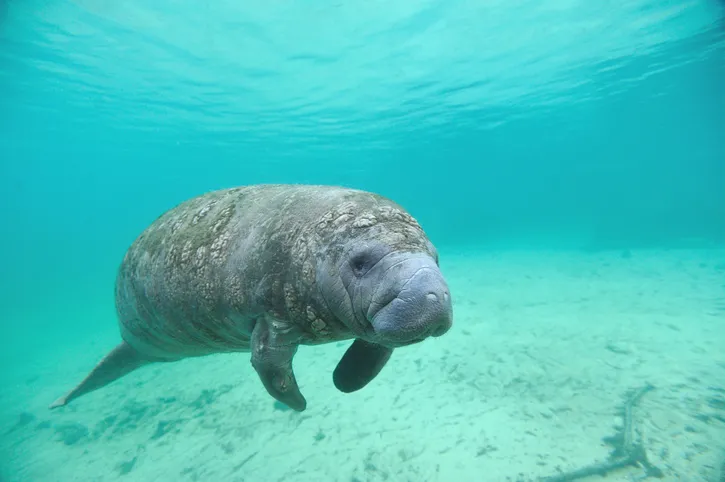
Amazonian manatees, known for their gentle nature, are inspiring symbols of resilience. They face threats from hunting and habitat destruction as their numbers dwindle. These herbivores play a crucial role in maintaining aquatic plant populations, contributing to a balanced ecosystem. Conservationists have been working to protect these species through habitat protection and anti-poaching efforts. Manatees are often victims of accidental entanglement in fishing gear, further endangering their populations.
Despite their size, manatees are vulnerable to even minor environmental changes. Efforts to save them include community outreach and education, highlighting their importance to the ecosystem. By protecting manatees, we also preserve the biodiversity of the Amazon’s river systems. Their gentle presence serves as a reminder of the delicate balance within the natural world.
7. The Mysterious Amazonian Tapir: Nature’s Gardener
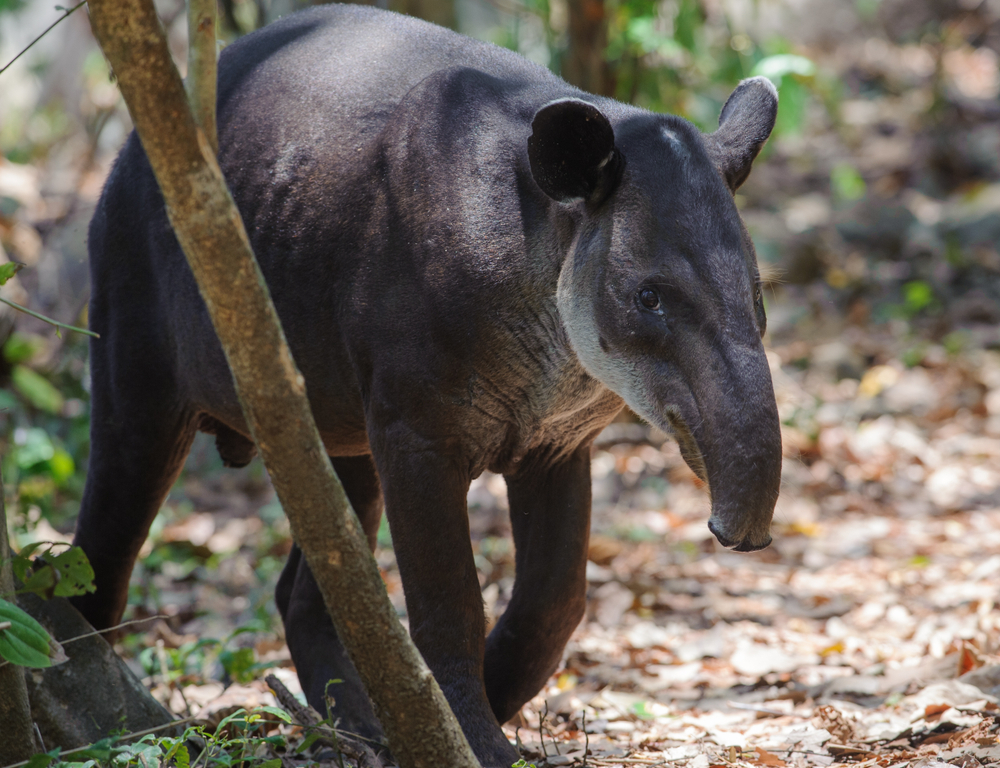
Amazonian tapirs are often called “gardeners of the forest” due to their role in seed dispersal. These gentle giants roam the forest floor, playing a critical part in maintaining plant diversity. Unfortunately, hunting and habitat loss are severe threats to their survival. Tapirs need large territories with abundant vegetation, making deforestation a significant issue. Their decline could lead to cascading effects on plant communities.
Tapirs are vital for the regeneration of the rainforest, assisting in the spread of countless plant species. Conservation efforts focus on creating protected areas and limiting human encroachment. By saving tapirs, we ensure the continued health and diversity of forest ecosystems. Their presence is crucial for the long-term resilience of the Amazon.
8. The Unique Pygmy Marmoset: The Tiny Terrors
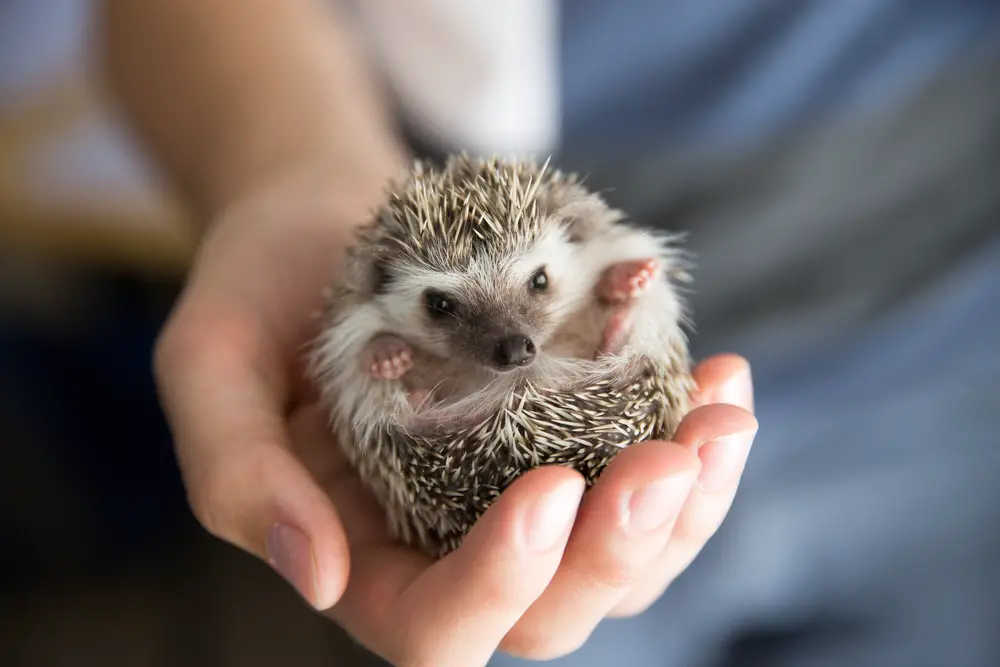
Pygmy marmosets, often called the world’s smallest monkeys, are captivating creatures of the Amazon. Their tiny size and social behavior make them intriguing subjects for study. Sadly, the illegal pet trade and habitat destruction are significant threats to their populations. These marmosets rely on dense forest habitats, where they play a role in insect control and seed dispersal. Their vulnerability highlights the broader challenges faced by many Amazonian species.
Protecting pygmy marmosets involves addressing deforestation and enforcing wildlife protection laws. Efforts to curb the illegal pet trade are also crucial for their survival. By preserving their habitats, we protect not only marmosets but also the intricate web of life that sustains them. Their tiny presence has a big impact on maintaining ecological balance.
9. The Graceful Scarlet Macaw: A Burst of Color
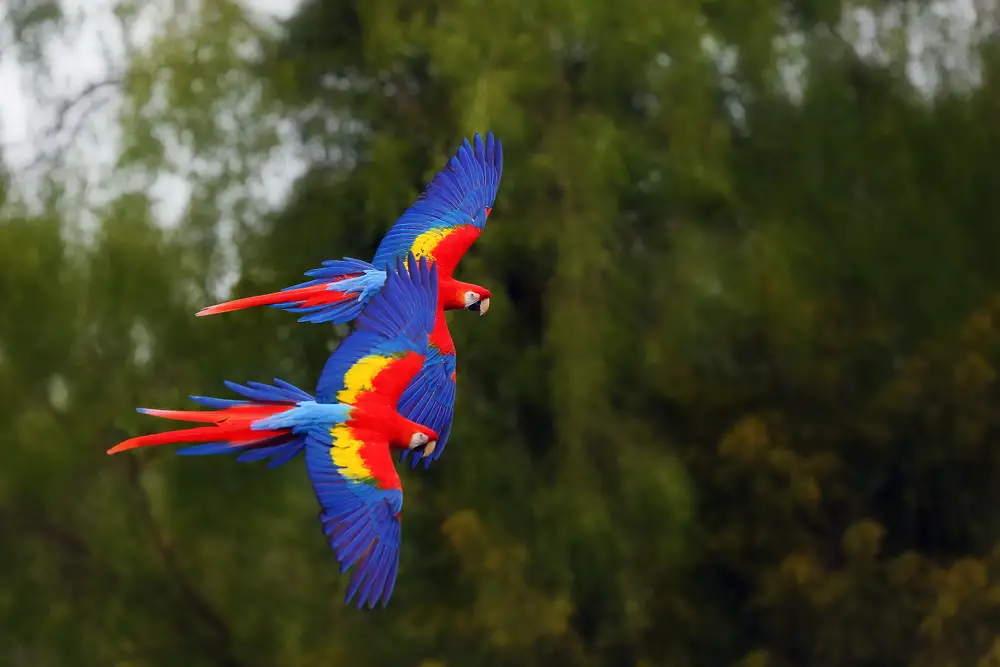
Scarlet macaws are known for their vibrant plumage and incredible flying abilities. These birds are not only visually stunning but also play an essential role in seed dispersal. Deforestation and the illegal pet trade have drastically reduced their populations. Conservationists are working to protect nesting sites and curb illegal activities. Macaws require large areas of undisturbed forest, making them especially vulnerable to habitat loss.
Their bright colors and social interactions make them symbols of the Amazon’s natural beauty. Efforts to save scarlet macaws focus on habitat preservation and education campaigns. By safeguarding these birds, we also protect the biodiversity of the rainforest. Their survival is a testament to the health of the Amazonian ecosystem.
10. The Shy Giant Armadillo: Architects of the Forest
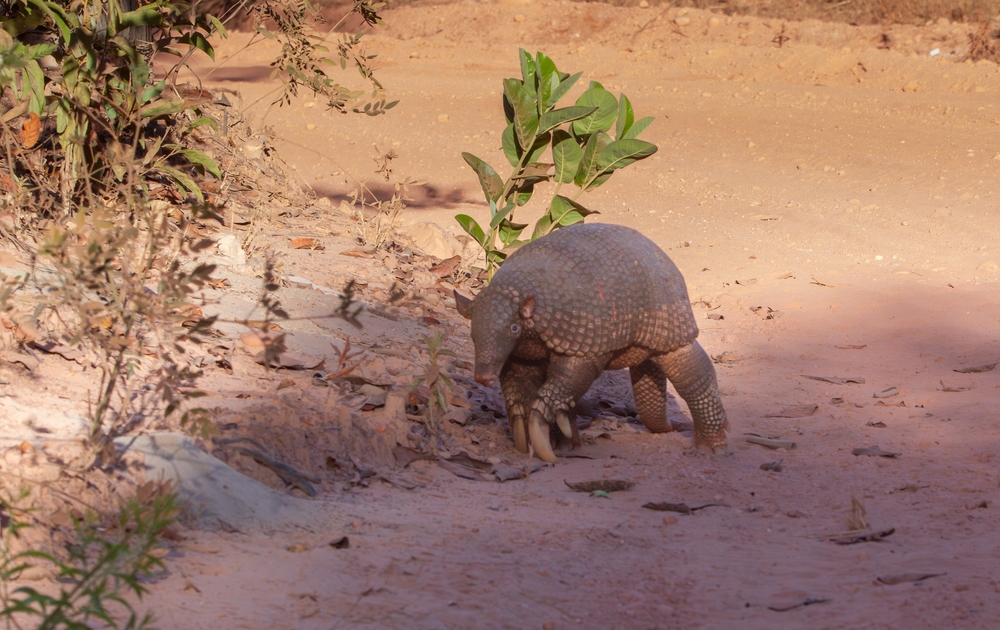
Giant armadillos are elusive creatures that play a critical role as ecosystem engineers. Their burrowing activities create habitats for other animals, demonstrating their importance to biodiversity. However, habitat destruction and hunting pose significant threats to their existence. These armadillos require large territories with diverse food sources, making them particularly vulnerable to environmental changes. Protecting them involves creating conservation corridors and enforcing wildlife laws.
Despite their armored appearance, giant armadillos are sensitive to human activities. Conservation efforts include research initiatives to better understand their ecological role. By protecting giant armadillos, we ensure the survival of countless other species that depend on their burrows. Their preservation is essential for maintaining the ecological integrity of the Amazon.
11. The Enigmatic Amazonian Manakin: Masters of Dance
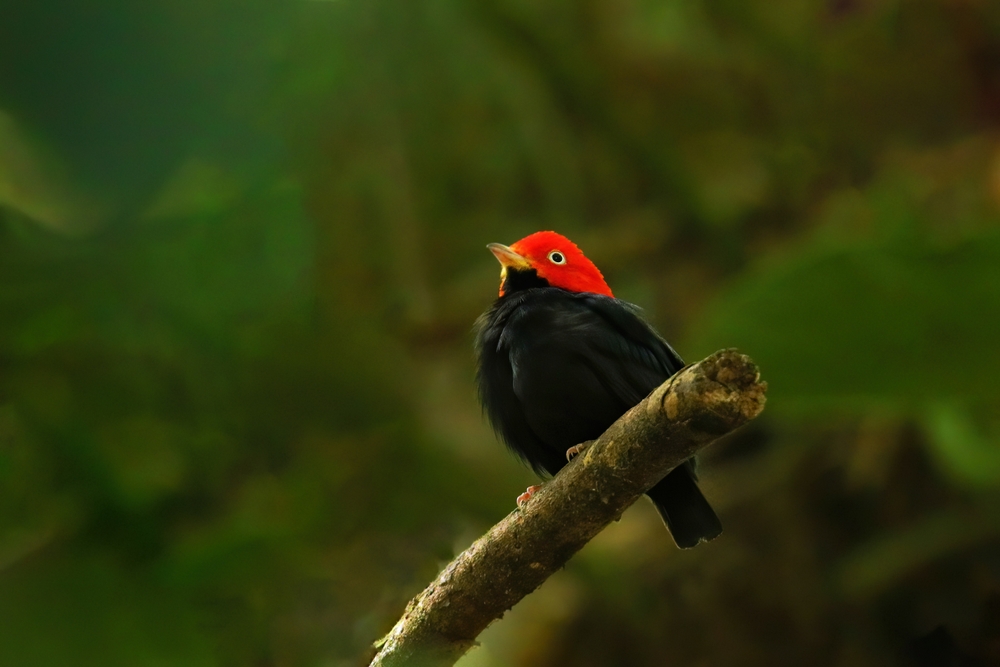
Amazonian manakins are renowned for their elaborate courtship dances and vibrant plumage. These small birds contribute to seed dispersal and play a role in maintaining forest diversity. Unfortunately, deforestation and habitat fragmentation threaten their populations. Manakins rely on dense, undisturbed forests for breeding and survival, highlighting the importance of habitat preservation. Protecting them involves safeguarding their forest homes and mitigating human impact.
These birds’ fascinating mating rituals make them popular subjects for ornithologists and nature enthusiasts alike. Conservation efforts aim to preserve critical habitats and raise awareness about their ecological importance. By saving manakins, we protect the biodiversity and natural wonder of the Amazon. Their dances symbolize the intricate relationships that sustain the rainforest ecosystem.
12. The Rare White-Cheeked Spider Monkey: Agile Acrobats
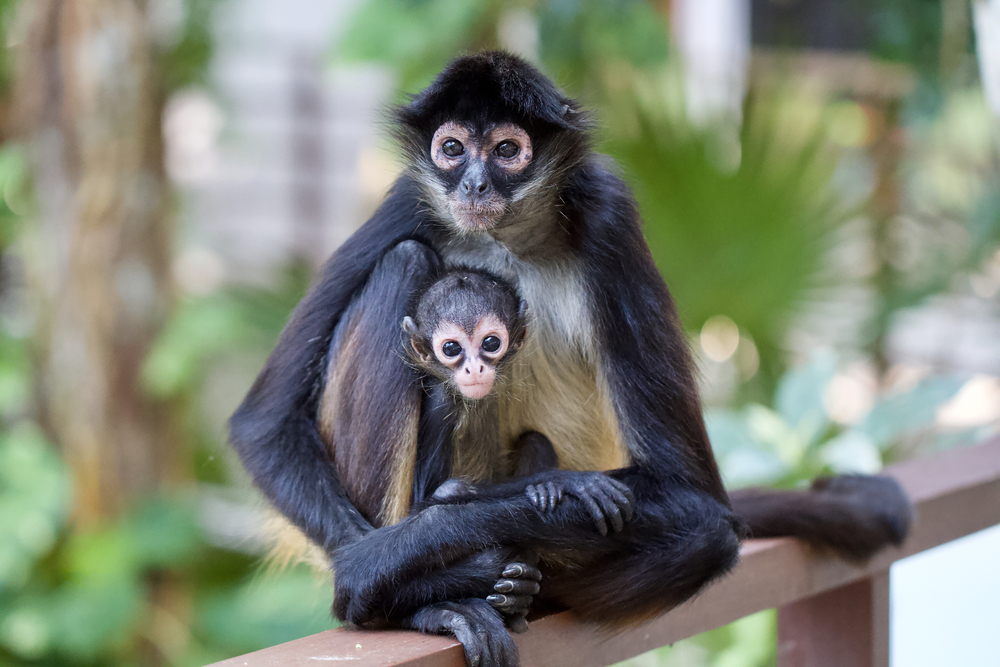
White-cheeked spider monkeys are agile and intelligent, known for their impressive acrobatic abilities. These primates are essential for seed dispersal, contributing to forest regeneration. However, habitat destruction and hunting have severely impacted their populations. Protecting their habitats and enforcing anti-poaching laws are critical for their survival. These monkeys rely on dense, biodiverse forests, underlining the importance of conservation efforts.
Their social behavior and complex communication make them fascinating subjects for study. Conservationists are working to create protected areas and promote sustainable land-use practices. By saving white-cheeked spider monkeys, we ensure the continued health and diversity of the rainforest. Their survival is a reflection of the broader challenges facing the Amazon.
13. The Endangered Giant Anteater: A Unique Forager
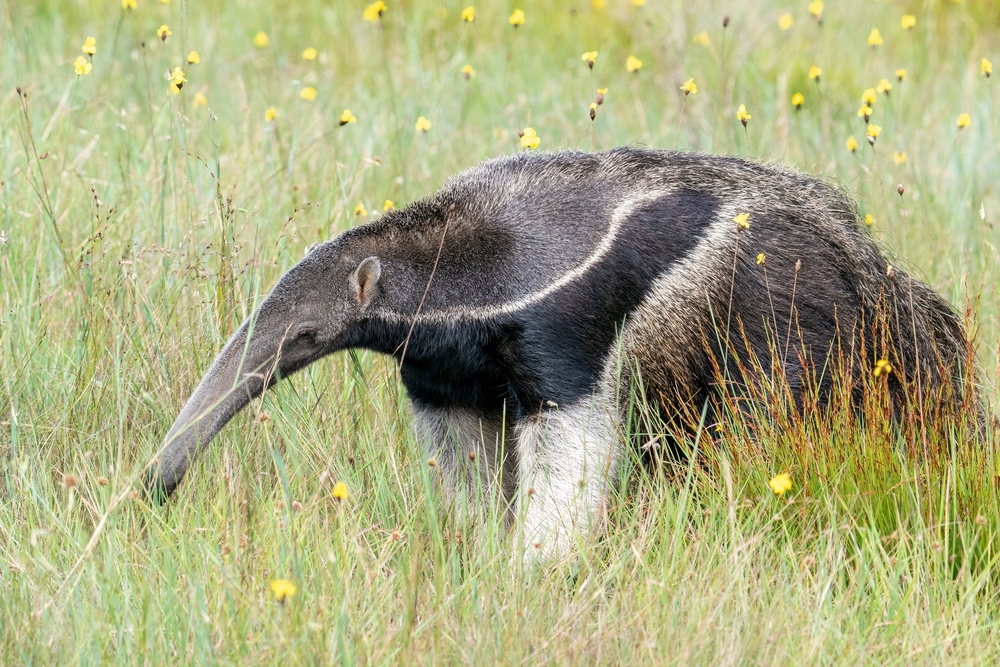
Giant anteaters are remarkable creatures with specialized adaptations for feeding on ants and termites. Their unique role as insect predators is vital for controlling insect populations. Unfortunately, habitat destruction and road mortality pose significant threats to their survival. Protecting their habitats and creating wildlife corridors are essential for their conservation. Anteaters require large territories, making them particularly vulnerable to environmental changes.
Their distinctive appearance and feeding habits make them popular subjects for wildlife enthusiasts. Conservation efforts focus on habitat preservation and public education about their ecological importance. By saving giant anteaters, we protect the intricate balance of the Amazonian ecosystem. Their survival highlights the need for comprehensive conservation strategies in the region.
